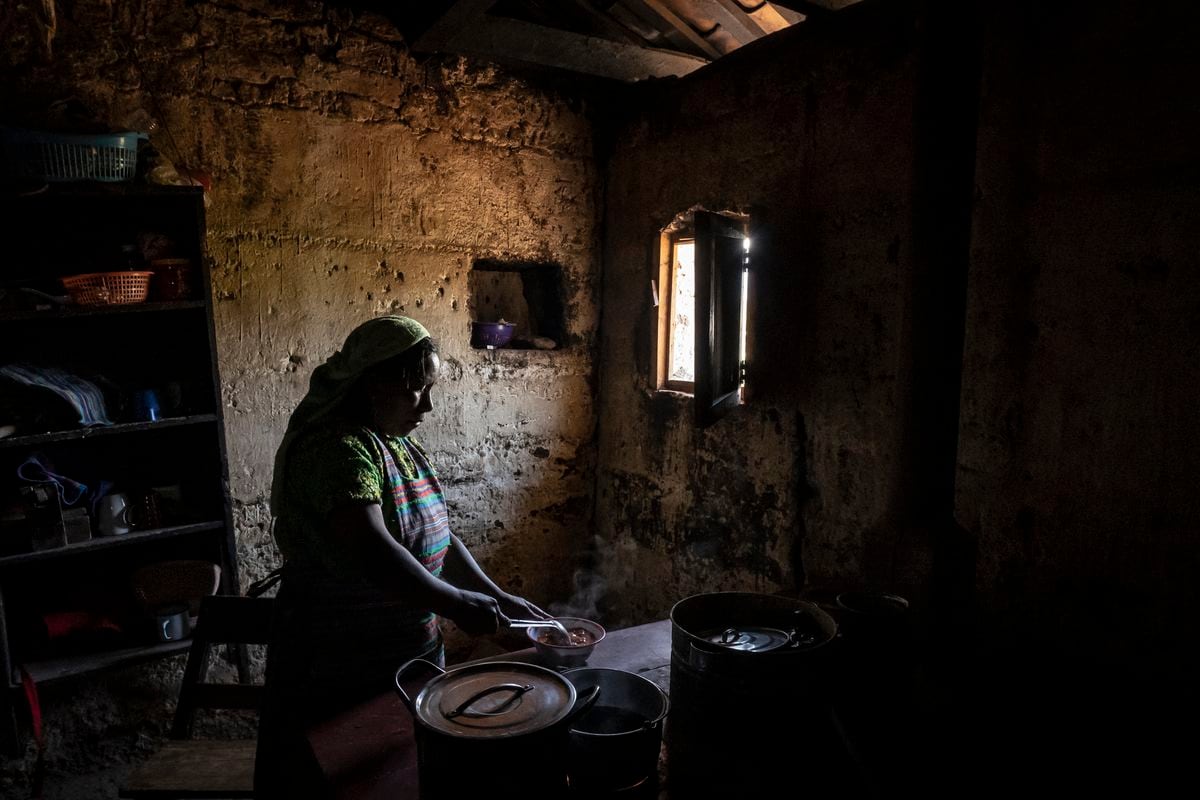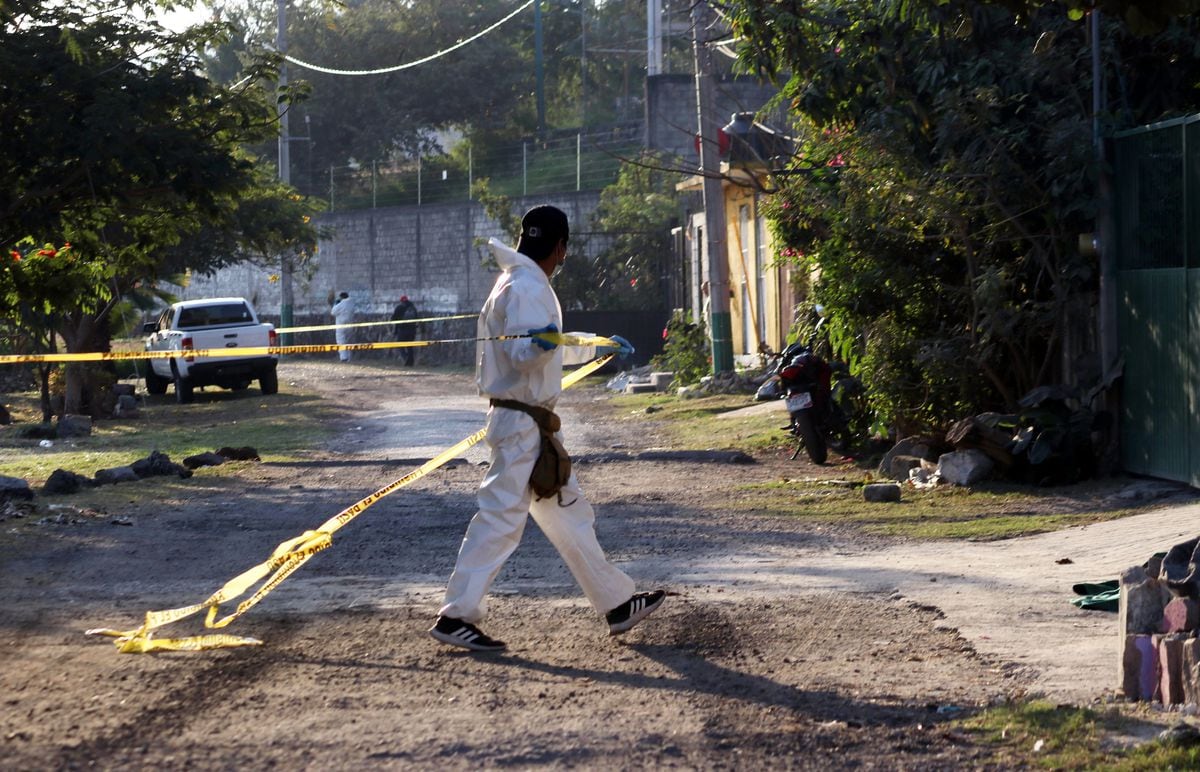Working women in Lima, Peru Victor Idrogo / World Bank
With little to celebrate.
This is how next March 8, International Women's Day, is approaching.
No gifts, no "happy day", no celebrations.
Almost a year after the declaration of the pandemic in several Latin American countries, the confinement imposed to mitigate it meant a setback in many of the achievements made in terms of gender in recent years.
And the data confirms the worst: Covid-19 takes out the most vulnerable in the region.
According to surveys carried out by the World Bank in 13 countries in the region, at the beginning of the crisis, women workers were 44% more likely than men to lose their jobs.
And as temporarily unemployed workers have begun to rejoin the labor market, job losses persisted more among women: 21% of employed women before the pandemic report having asked for their job.
Ximena del Carpio, manager of the Poverty and Equity Practice for Latin America and the Caribbean at the World Bank, provides advice on public policies to various governments.
In this interview she explains the extent of the impact of the pandemic on working women.
Ask.
Why has the pandemic affected women the most?
Answer.
I will start by quoting an important number.
The fall in female labor force participation has a high cost for the countries of the region.
A World Bank study estimates that maintaining gender gaps in labor force participation and education could cost Latin America and the Caribbean on average about 14% of GDP per capita over the next three decades.
Even before the pandemic, there was progress to be made.
Only half of the women of working age participated in the labor market (53%), compared to 77% of the men in the workforce.
The pandemic has exacerbated job losses for all, but especially women, and the recent Bank study affirms this.
The reasons for this deterioration are at least three.
First, women often work in sectors that have been affected by the pandemic due to the need to restrict face-to-face activities, such as commerce, and in occupations that do not easily lend themselves to teleworking.
Second, there is a high proportion of women working on their own account and in the informal sector, that is, in vulnerable working conditions and who do not lend themselves to remote work either.
Third, the region's social norms, which still put women at the center of household chores, which have increased with the closure of schools and taking care of other family members at the cost of time devoted to other activities.
Q.
How can this data be sized?
R.
The best way is to "humanize" the statistics of female employment, looking inside the homes to understand how morning tasks are divided between men and women.
For example, in Chile, whose situation is not different from what happens in the region and in the world, already in pre-ndemic times, women dedicated an average of three hours more a day than men to domestic and care tasks.
If we add to that the quarantines, teleworking, the closures of nurseries and schools and the care needs that this entails, it is not surprising that the pandemic has women in the balance.
A higher proportion of Chilean women who do not work report that they do not do so because they need time to take care of their children or sick relatives (9%, compared to 0.7% men), according to the Frequent Monitoring Survey.
For their part, opinion polls in Chile support these findings: for the 52% of women who telework during the pandemic, the aspect that most hinders their work is to make it compatible with household chores.
Meanwhile, care tasks are mentioned as one of the limitations to return to the work world.
Q.
Has there been any progress in terms of labor inclusion of women?
A.
The pandemic has hit many businesses, particularly those headed by women, however the shock appears to be motivating these women-led businesses to move towards digital solutions.
Preliminary results of a global study by the World Bank (using data from the
business pulse surveys related to covid-19)
on the differential gender impact of the pandemic on entrepreneurship shows that businesses led by women, on average, have a greater likelihood of using digital technology.
Q.
How can social norms that are often a barrier to the labor integration of women be modified?
A.
One area where you can drive change is in the care economy.
Establishing paternity leave is one of the ways to begin this transformation.
Although causality is difficult to establish, the correlation between paternity leave and female labor force participation shows that, in countries where parents have the possibility of caring for children after birth -as in the case of Spain-, rates of female participation in the labor force and female employment are, on average, higher.
However, having these laws does not guarantee that men will use the licenses.
Small adjustments such as reserving specific periods of leave for parents, increasing the flexibility of said leaves or promoting the benefits of this type of leave among the population, can influence behavior and change gender norms towards traditional roles.
Q.
What can governments do to ensure that women are included in recovery plans?
A.
First, we must emphasize the importance of women being included in planning and decision-making processes.
This is key for the economy, society and families.
Second, policies that help promote gender equity in a sustainable way must be promoted.
A specific case, for example, is to alleviate the increase in household responsibilities that falls on women and prevent this increase from being permanent.
Alternative care services for minors and other household members can also be guaranteed or extended.
On the other hand, when reactivating economies, the barriers faced by women in the labor market must be taken into account.
Part of this is creating opportunities for women to successfully participate and start businesses in traditionally male sectors and professions.
In this sense, the World Bank provides gender analysis and data disaggregated by sex to contribute to the design of programs and policies aimed at responding to the crisis.
For example, in Peru, the Bank made data and evidence available to advise on the design of fiscal stimulus programs with a gender angle, so that women can access financial support (for example, in the form of conditional transfers ) and make effective use of resources.
It is also supporting programs aimed at promoting gender equality in other areas, as in the case of Honduras.
In Brazil, Mexico and Uruguay, we follow plans and strategies to end gender violence in its many forms, and the gaps in education and professional training.
María Victoria Ojea
is an online producer at the World Bank


/cloudfront-eu-central-1.images.arcpublishing.com/prisa/EMYXC3EVHNEG3OJHGIQCB2IVYA.jpg)

/cloudfront-eu-central-1.images.arcpublishing.com/prisa/4PKPLHZOXBG5TEAQ6JNDTUJXBA.jpg)




